RePowerEU Plan and some Actions of the European Commission to reduce energy dependence
In reaction to Russia's invasion of Ukraine, the European Union has created a package of actions aimed to shut off Russia's energy dependence on fossil fuels. This package of actions focuses on the one hand, on mitigating the effects of the war on the energy markets, and on the other, on reducing energy dependence, diversifying gas supplies (supporting the penetration of other gases of renewable origin that can replace it as green H2 and biomethane) accelerating the implementation of renewable generation and improving energy efficiency.
The main action is the creation of the RePowerEU Plan which aims to end Europe's dependence on Russian fossil fuel imports by 2027, while addressing the climate crisis through energy savings, clean energy production and diversification of energy supply.
In this new scenario, all Member States must create a new chapter in their plans to meet the objectives of REPowerEU and send it to Brussels for approval. Here we find a remainder of 225,000 million and new subsidies amounting to 20,000 million, financed through the auction of greenhouse gas emission rights.
What other actions have the European Commission proposed to finance renewable projects?
- Cohesion Funds and EAFRD: These are funds that already exist, but due to the situation of the war in Ukraine, the Member States can choose to transfer more budget from these funds to the Resilience and Recovery Plan. Specifically, they can transfer up to 12.5% of the Cohesion Fund (44,800 million) and another 12.5% of the EAFRD Funds for the exclusive use of REPowerEU objectives.
- CEF-Energy: This program aimed at developing energy infrastructure also existed before the publication of REPowerEU. The budget for the 2021-2027 period is 5,350 million euros and subsidizes the chosen projects by 50%. There are two different categories; (i) PCI (Projects of Common Interest) such as electricity and gas networks, smartgrids and CO2 capture and storage and (ii) CB-RES (cross-border renewables) aimed at cross-border renewable production and storage. There is an open call for PCI projects until September 1 with an endowment of 800 million and a call for CB-RES is expected soon with an endowment of 100 million.
- Innovation Fund: Program to encourage innovative projects that reduce CO2 emissions. They focus on the development of renewable energies, capture and storage of CO2, energy saving and efficiency in the electro-intensive industry and energy storage.
These funds come from the Emission Rights Trading System and subsidize up to 60% of the chosen projects. There are two annual calls, one for large-scale projects (CAPEX greater than 7.5 million) and another for small-scale projects (CAPEX between 2.5 and 7.5 million). The 2022 small-scale call is currently in force until August 31, with a budget of 100 million. It is expected that for the large-scale call for 2023, which will come out in the first two quarters of next year, a budget of 3,000 million will be reached (double that of this year). - LIFE-CET: It is a subprogram within LIFE for coordination and support actions (small projects) in the field of energy efficiency, renewable energy, neutral and resilient economy with the environment. The budget for the 2021-2027 period is more than 1,000 million euros and 95% of the chosen projects are subsidized. The 2022 call is open until November 16 and has a budget of 98 million euros. This program finances the hours of work, but not the investments.
At Vector Renewables we have a team to advise our clients on any regulatory change in energy matters. If you need more information in this regard or want to contact our Regulatory Affairs department, do not hesitate to write to us at
When you subscribe to the blog, we will send you an e-mail when there are new updates on the site so you wouldn't miss them.

